Over the last week, we've had a wonderful stint of warm weather. In preparation, I cleared my schedule for a fall planting holiday. This year I tried to concentrate on the minor bulbs that often get overlooked in the mad rush to plant tulips and daffodils -- I did do a bit of that too, but we'll save that for later.
~
The minor bulbs like snowdrops, winter aconite, and bluebells are so wonderful because they can easily be tucked under deciduous shrubs and around perennials which are rarely divided like peonies and oriental poppies. Also, many of them are the first late winter flowers to appear. In zone 6, I begin getting snowdrops in early February.
~ 1. Snowdrops. I planted three varieties of snowdrops: Galanthus elwesii, Galanthus ikariae, and Galanthus nivalis flore pleno. Elwesii is the largest and first to bloom and the others follow extending the flowering from February well into April. I usually order from Van Engelen so that I can get large quantities inexpensively. Snowdrops are best planted in groups of no less than ten bulbs. Seeing that they bloom when nothing else is and that they are rodent proof, you can't have to many of them.
1. Snowdrops. I planted three varieties of snowdrops: Galanthus elwesii, Galanthus ikariae, and Galanthus nivalis flore pleno. Elwesii is the largest and first to bloom and the others follow extending the flowering from February well into April. I usually order from Van Engelen so that I can get large quantities inexpensively. Snowdrops are best planted in groups of no less than ten bulbs. Seeing that they bloom when nothing else is and that they are rodent proof, you can't have to many of them.
~ 2. Winter Aconite. Winter aconite starts blooming once the snowdrops have began. I find that they more quickly naturalize than snowdrops so I planted about a third fewer of them. I soak my bulbs for a few hours before planting because the bulbs have a tendency to dry out. I also buy from Old House Gardens whose bulbs are dipped in agricultural wax alleviating the problem of the bulbs drying out. These I scatter about in areas of the garden that have humusy soil and I know do not go dry during the summer as they like consistent moisture throughout the year.
2. Winter Aconite. Winter aconite starts blooming once the snowdrops have began. I find that they more quickly naturalize than snowdrops so I planted about a third fewer of them. I soak my bulbs for a few hours before planting because the bulbs have a tendency to dry out. I also buy from Old House Gardens whose bulbs are dipped in agricultural wax alleviating the problem of the bulbs drying out. These I scatter about in areas of the garden that have humusy soil and I know do not go dry during the summer as they like consistent moisture throughout the year.
~ 3. Tommies. On the heels of the aconite, are the tommies. Crocus tommasinianus bloom before Crocus vernus and are less frequently eaten by squirrels and chipmunks. I planted a beautiful lavender form called Roseus. These can go everywhere, but I like them along the front walk so during the cold days of early spring I don't have to venture far to take a look at them or cut them. Again, I planted in groups of ten.
3. Tommies. On the heels of the aconite, are the tommies. Crocus tommasinianus bloom before Crocus vernus and are less frequently eaten by squirrels and chipmunks. I planted a beautiful lavender form called Roseus. These can go everywhere, but I like them along the front walk so during the cold days of early spring I don't have to venture far to take a look at them or cut them. Again, I planted in groups of ten.
~
4. Glory of the Snow. Also in March, the Glory of the Snow blooms. These flowers are such an iridescent blue that they shout spring is here. I love these at the base of Magnolias which bloom around the same time.
~
5. Crocuses. By mid-April, Crocus vernus comes into bloom. The first year I planted these they appeared and flowered beautifully, only to be dug up and eaten by chipmunks immediately afterward. I think they did not dig them in the fall because I soaked them in deer repellent before planting. To avoid them from being dug up in the spring, I laid deer netting over the area for a few weeks. The chipmunks seem to forget they're there after a while and leave them alone.
~ 6. Muscari. At the end of April, muscari comes into bloom. Muscari is wonderful with late blooming daffodils and early tulips. Also, they're useful to use as a marker for where other bulbs are planted. They sprout and flower in the spring, have a typical summer dormancy, but in the fall muscari sprouts leaves again. If planted among other bulbs, it can serve as a fall marker so that the other bulbs are not accidentally displaced during the fall planting season. Although, no one bothers the muscari bulb, deer have browsed the foliage of mine.
6. Muscari. At the end of April, muscari comes into bloom. Muscari is wonderful with late blooming daffodils and early tulips. Also, they're useful to use as a marker for where other bulbs are planted. They sprout and flower in the spring, have a typical summer dormancy, but in the fall muscari sprouts leaves again. If planted among other bulbs, it can serve as a fall marker so that the other bulbs are not accidentally displaced during the fall planting season. Although, no one bothers the muscari bulb, deer have browsed the foliage of mine.
~
7. English Bluebells. English bluebells bloom in mid May along with late daffodils and tulips. English bluebells are dainty, sweet smelling flowers that are avoided by animals.
Welcome to Heirloom Gardener
Tuesday, November 04, 2008
Beyond Daffodils and Tulips: Seven Minor Bulbs To Plant for Spring
Posted by
Julia Erickson
at
12:01 AM
![]()
![]()
Labels: Bulbs and Tubers, Poppies, Spring Garden
Subscribe to:
Post Comments (Atom)
Search Heirloom Gardener
Labels
- About Blogging
- Annuals/Biennials and Perennials
- Autumn Garden
- Books and Movies
- Botanical Gardens
- Bulbs and Tubers
- Children's Garden
- Chrysanthemum
- Clematis
- Container Gardening
- Crocus tommasiniasus roseus
- Cut and Forced Flowers
- Cutting and Rose Gardens
- Dahlias
- Deep Thoughts About Gardening
- Egg Garden
- Fences Arbors Walls and Paths
- Floral arrangements
- Front Border
- Fun Stories About Gardening
- Garden Bloggers' Bloom Day
- Garden Bloggers' Design Workshop
- Garden Planning
- Gardening Blogs
- Gardening Tools and Structures
- Gardening with Children
- Goldberry Hill
- Heirloom and Organic Food
- Hibiscus
- Holidays
- Hydrangeas
- Japanese Beautyberry
- Lilies
- Mixed Borders
- New Jersey / Local Interest
- Nurseries
- Online Gardening Resources
- Peonies
- Pest Control
- Picture This Photo Contest
- Piet Oudolf
- Poppies
- Propagation and Seeds
- Pruning and Maintenance
- Roses
- Seed Heads
- Self Seeders
- Shrubs
- Spring Garden
- Summer Garden
- Trees
- Wildlife in the Garden
- Winter Garden
- Zinia
Blog Archive
-
▼
2008
(202)
-
▼
November
(39)
- Six Trouble-Free Heirloom Roses: Rose de Rescht, ...
- After the Frost: the Birch Tree
- Courtnay Daniels's 15 acres of gardens in Virginia
- Amaryllis, Winter Containers and Christmas Decorat...
- After the Frost: Thai Basil
- Happy Thanksgiving: A Gardener's Thanksgiving Day...
- Shrub Hibiscus Seed Heads in the Walled Garden
- CowPots™: Molded Manure - an idea to check out for...
- Heritage Rose Hip in the Children's Garden
- After the Frost: Sunflower Seed Heads
- Five Tips for Growing Edibles with Children
- After the Frost: Brown Eyed Susan Seed Heads
- A Summer and Autumn Perennial: Metamorphosis of C...
- After the Frost: Star Magnolia in the Walled Garden
- Autumn Beauty: the Orange and Yellow Rose Hips of...
- Autumn Beauty: Excellenz von Schubert
- Autumn Beauty: the Fern Fronds change color too
- The Frost is Coming: It's Time to Cut All the Flo...
- A Late Season Bouquet in Tyra's Garden
- Rosa virginiana hips
- Garden Bloggers' Bloom Day November 2008 - More Bl...
- "Put the Pruners Down and Step Away": Autumn is n...
- Autumn Beauty: The Last Clematis
- Sweet Brier Rose Hips
- Perhaps we garden bloggers can help remember our v...
- Autumn Beauty: Grasses in my Mixed Borders
- Autumn Beauty: Chrysanthemums
- How to Make a Planting Square to Uniformly Space Y...
- In Praise of Blotanical: Where Garden Blogs Bloom
- How to Grow Flowers on a Military Base in Iraq
- Interview with Lawrence Griffith, Colonial William...
- A Lattice Screen to Hide My Gardening Supplies and...
- Autumn Beauty: Clematis Seed Heads
- Autumn Beauty: The Yellow Leaves of the Hickory Tree
- One Garden That Still Looks Great After the Frost
- New Blogger Gadget: Followers
- Beyond Daffodils and Tulips: Seven Minor Bulbs To...
- Fragrance in the Garden: The Katsura Tree in Autumn
- A Flowering Tree for Spring and Fall: Autumn Cher...
-
▼
November
(39)










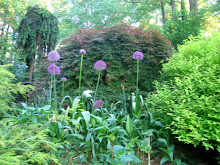
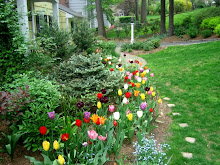
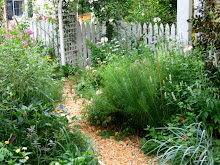
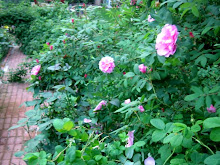

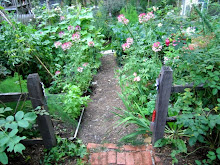

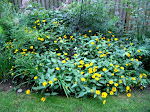





2 comments:
I love winter aconite and have planted it three times and it has never come up for me. I'm not sure exactly what I am doing wrong since I have all the other bulbs you mention going great guns. Maybe I'm fated not to be an aconite acolyte.
See my comment above about the bulbs drying out. Until I figured this out, they never worked for me.
Post a Comment